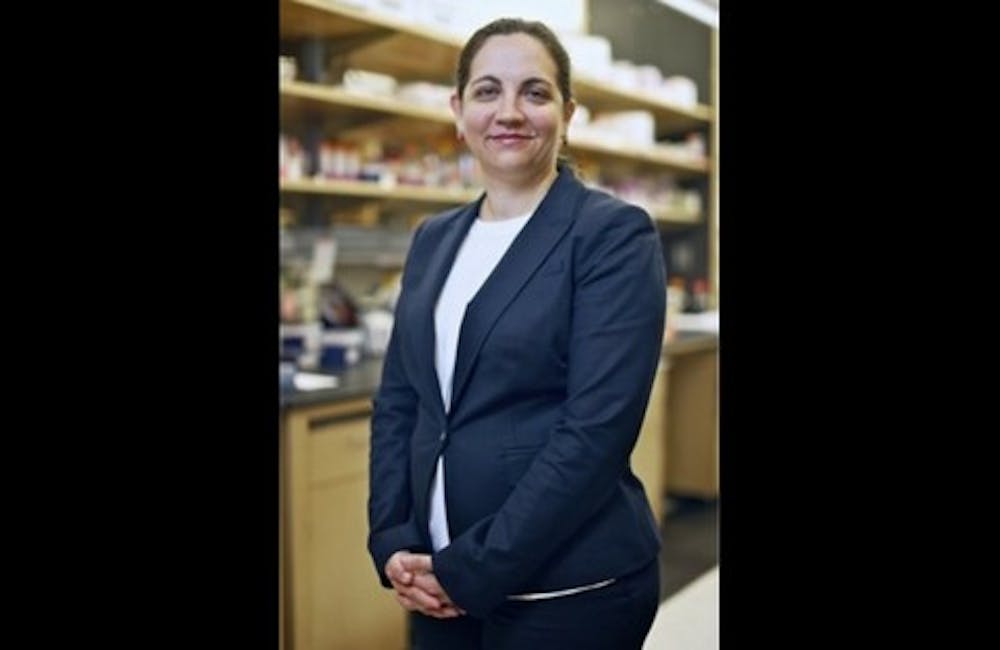It takes more than neurons to make up a brain—in fact, another type of cell known as an astrocyte may be integral for synapse formation and underlie several diseases, according to a recent Duke study.
A paper published Nov. 8 in the journal Nature identified the proteins that astrocytes use to attach to neurons and influence the formation of synapses, which are the connections between neurons. Dysfunction in these attaching proteins, called neuroligins, has been associated with several disorders including schizophrenia and autism.
“Overall, our findings show that these important and disease-linked class of proteins—neuroligins—not only function in neurons to control synaptic connectivity, but their function in astrocytes is also essential for both the development of the astrocytes and also the synaptic connections that are surrounded by those astrocytes,” said Cagla Eroglu, associate professor of cell biology and neurobiology and senior author of the paper.
She explained that astrocytes are classified as a type of glia, the cells that function as “glue” in filling spaces between neurons. Astrocytes are also vital for the health of neurons, as they provide essential nutrients, maintain synaptic connections and clear excess neurotransmitters, Eroglu said.
However, many researchers have long ignored the study of glial cells, opting to investigate neurons simply because their study is generally more straightforward.
“Despite their importance, it has been quite difficult to study [astrocytes] until recently because unlike neurons—where you can record their activity and function using physiological methods—the astrocytes don’t have such electrical activity,” Eroglu said.
Building off recent developments that allow researchers to manipulate genes in mice, Eroglu’s lab was able to analyze the role of astrocytes more in depth.
In the first portion of their study, Eroglu and her team focused on astrocytes in the visual cortices of mice that grew up in complete darkness. Since the visual cortex requires light input to form properly, Eroglu explained, the growth of neuronal synapses was stunted in these mice. In addition, their astrocytes did not form in a coral-like structure, which is characteristic of such cells.
“This told us that the formation of astrocyte structure both depends on development [as the animal ages], but also the development and activity of synaptic circuits around them,” she said.
The researchers then moved away from mice to test whether astrocytes would still grow and form their intricate shape when isolated from neurons. Eroglu noted that in this condition, the astrocytes failed to develop properly in the absence of neurons that they could latch onto. However, when these underdeveloped astrocytes were added to the culture containing neurons, they adopted a “more complex structure,” she explained.
This revealed that there was some interaction between the astrocyte and neuron surfaces enabling the proper development of each cell. After testing which genes were involved with this process, the team identified some of the neuroligin genes as prime candidates.
“Think of these molecules as sticky molecules, so they mediate sticking to other cells,” she said. “We found that, indeed, if we remove these sticky molecules from the astrocytes, the astrocytes were no longer able to acquire that complex shape in response to neurons.”
Eroglu added that these genes were significant in another way, as mutations in neuroligin family genes have been tied to various neurological disorders such as autism and schizophrenia.
The researchers next identified the counterpart of neuroligins in neurons—another “sticky molecule” called neurexin coating the surface of neurons. They confirmed their hypothesis on the interaction between neurexins and neuroligins by coating fibers with neurexin and introducing astrocytes to the fibers. Despite the lack of neurons present, the astrocytes still grew to their complex shape when contacting the neurexin-coated fibers, Eroglu explained.
Turning back to their mice, Eroglu’s lab accumulated more evidence to confirm their earlier findings.
“During these studies, we also realized that not only were we changing the astrocytes’ [form] but also diminishing the formation of synapses around those astrocytes when we eliminated neuroligins from those astrocytes,” she said.
Eroglu highlighted this study as an example of the importance of researching non-neuronal cells in the nervous system.
“I think this very nicely shows that we cannot understand the brain unless we understand we understand the function of each cell in the brain,” she said. “Neurons are very important, but they also function in concert with the cells around them—in this case astrocytes, which are the most abundant cell type in the human brain.”
In the future, Eroglu noted that it would be an important to determine the mechanism behind this interaction between astrocytes and neurons. Whereas her lab has primarily studied the role of astrocytes in development, it would be helpful to study how interfering with astrocyte function would impact a mature animal, she added.
In addition, Eroglu emphasized the importance of investigating neuroligin genes in all nervous system cells.
“If we want to really fully comprehend their function, we cannot only study them in only one cell type in the brain, which is the neuron,” she said. “We need to be able to understand the brain as a compilation of many different cells and their interactions.”
Get The Chronicle straight to your inbox
Signup for our weekly newsletter. Cancel at any time.

